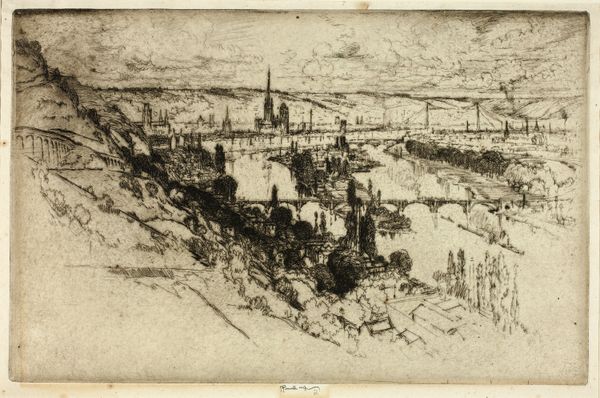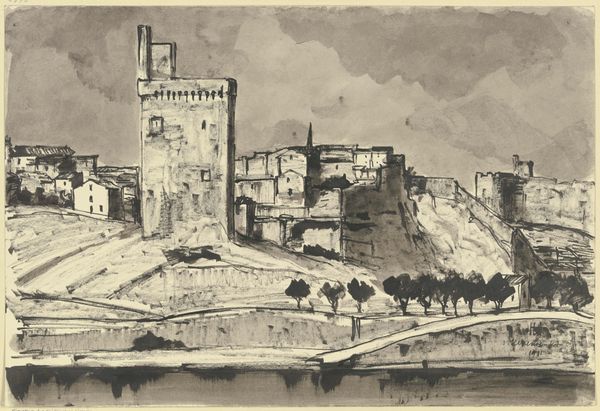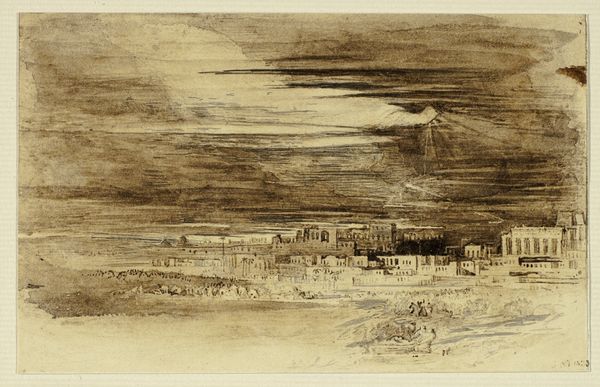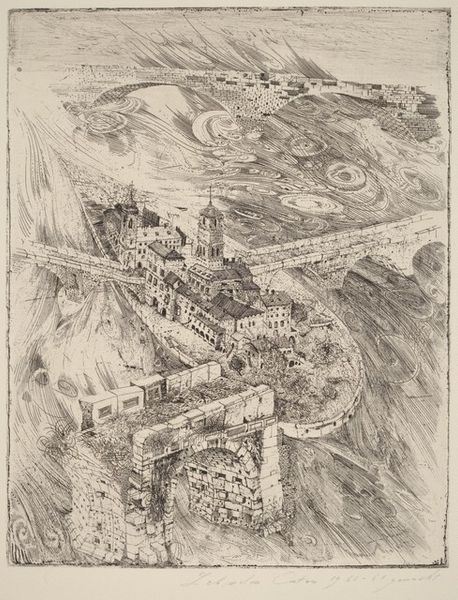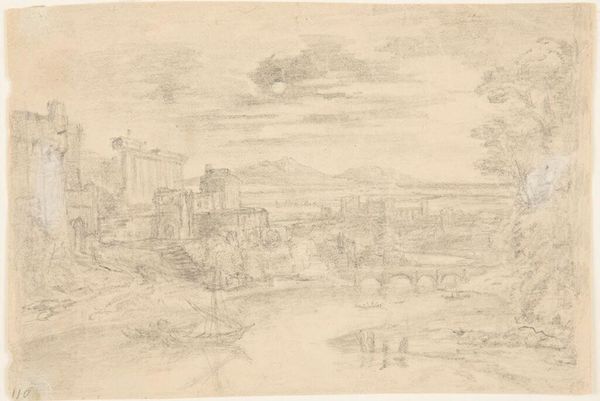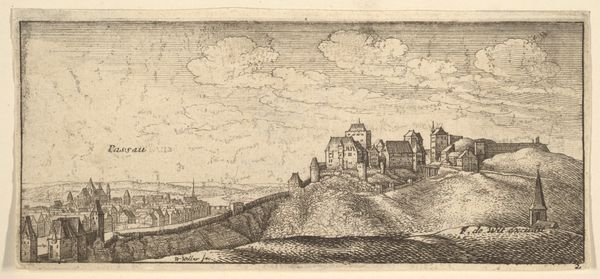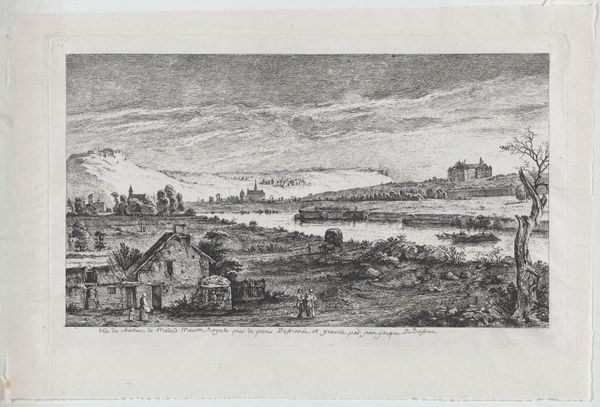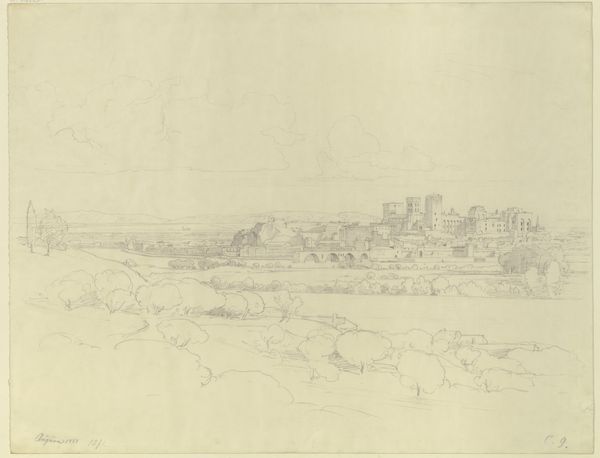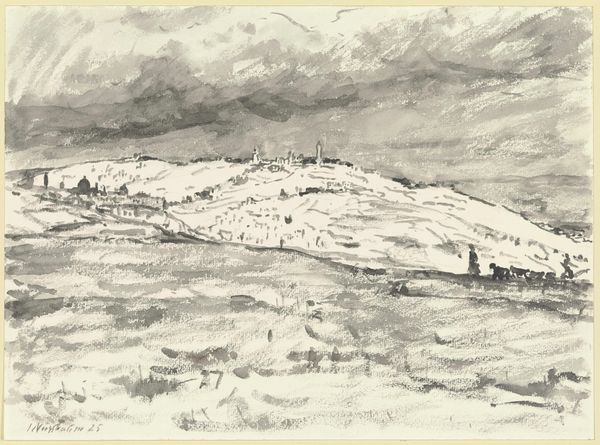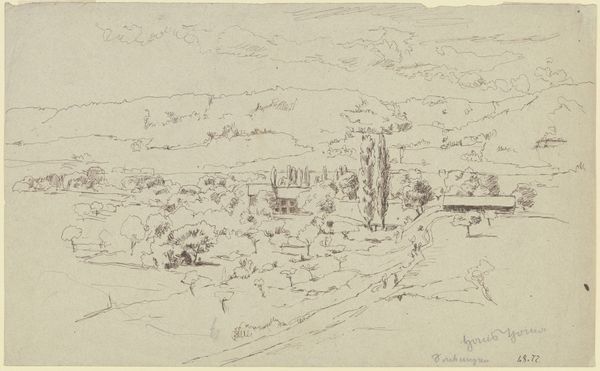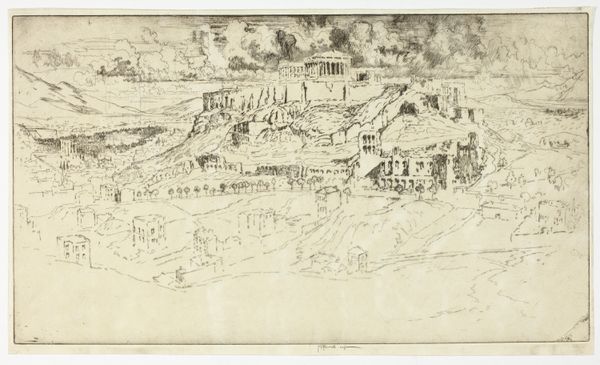
drawing, print, pencil
#
drawing
# print
#
landscape
#
classical-realism
#
ancient-mediterranean
#
pencil
#
cityscape
#
academic-art
Copyright: National Gallery of Art: CC0 1.0
Curator: Here we have Joseph Pennell's "Storm behind the Acropolis," a pencil drawing, also presented as a print, created in 1913. Editor: Woah, that’s moody. I mean, even without knowing it’s called “Storm Behind…” there’s this definite sense of dramatic weight looming over the whole scene. You feel the energy of that impending storm. Curator: Indeed. Pennell uses contrasting pencil strokes to establish a hierarchy in the image, and it is a well-balanced example of academic-art principles applied to cityscape renderings. The dramatic sky becomes as crucial as the subject, as a form of negative space through composition and contrast. Editor: It almost feels Romantic in that way, the sublime power of nature dwarfing even these monumental architectural achievements. The Parthenon becomes vulnerable, not eternal. Look how delicate Pennell makes it with those fragile lines; it’s all pencil dust and light. Curator: Quite, the delicacy derives from a strategic manipulation of the medium to emphasize not the bulk and material of the building, but to present its image—the aesthetic appreciation, rather than documentation. And this provides another lens on thinking about classical idealism and its legacy. Editor: I agree that there is a layer there on perception and historical legacy. Still, though, something about those sketchy pencil lines gives the sense that even stone is fleeting and temporary. I almost hear the rumble of thunder and feel the breeze picking up looking at this. I guess for me that immediacy is the powerful part. Curator: An intriguing counterpoint to the structured approach of formal academicism in Pennell's approach to the picture plane and tonal gradations across it. Editor: In the end, I’m still mostly struck by how dramatically the sky seems to speak! What began as historical monument slowly shapeshifts into a study in atmosphere. Curator: Indeed. It serves as an excellent study in medium manipulation and the ability of this choice to communicate historical commentary within a static, ostensibly objective medium.
Comments
No comments
Be the first to comment and join the conversation on the ultimate creative platform.
